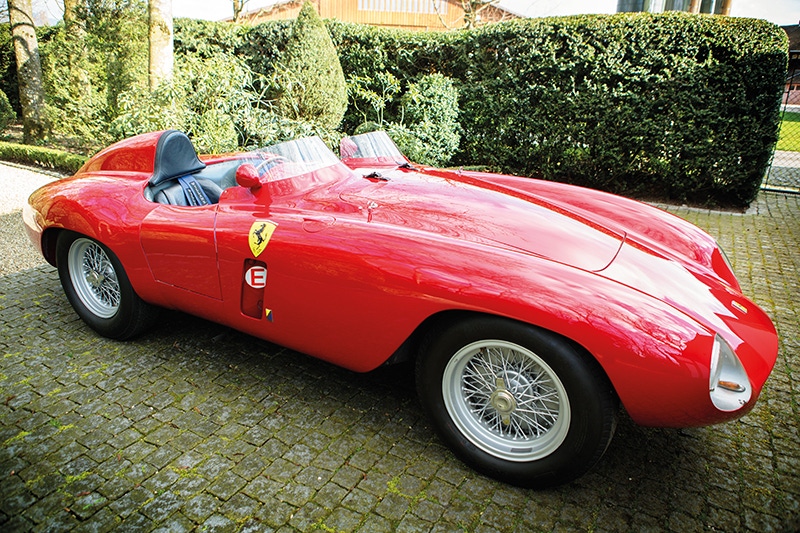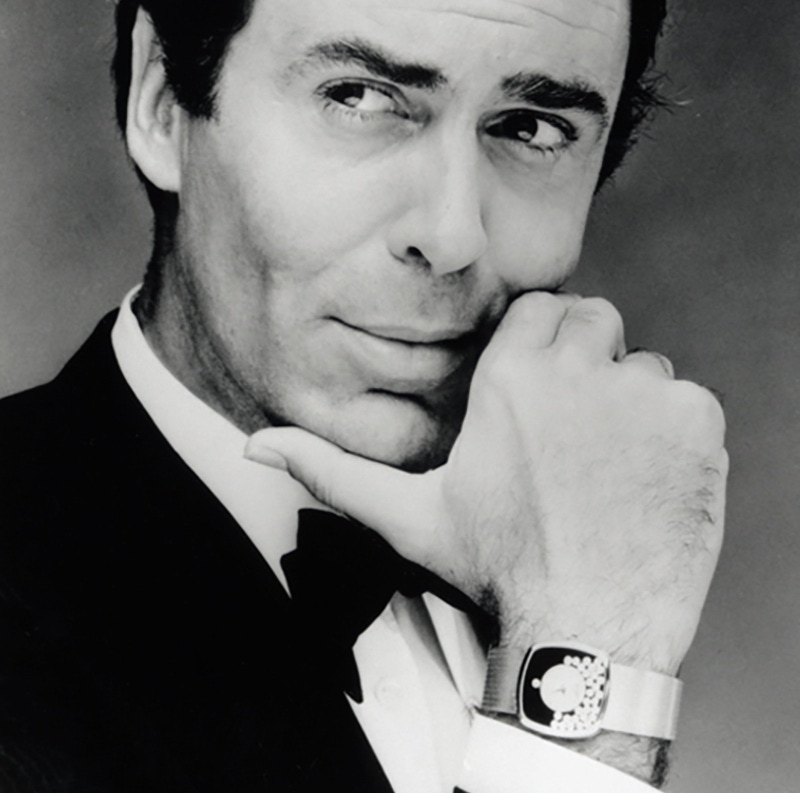Game Changer: Chopard L.U.C x The Rake Limited Edition 1860 Featuring the Calibre 1.96
Chopard L.U.C and The Rake pay tribute to the maison’s incredible history by remaking a limited series of 10 1860 watches. These watches will be launched in November of 2018 and owners will form the very first code name, Lucky L.U.C club.

Do you remember the scene in Stanley Kubrick’s 2001 A Space Odyssey when the monolith appears before the apes accompanied by the stirring refrains of Richard Strauss’ musical interpretation of Friedrich Nietzsche’s Thus Spoke Zarathustra, endowing the primates with self-awareness and enlightenment? OK, now flashback to 1996, when Tom Cruise was bellowing “Show me the money!,” to his ambassador of Quan, to the moment Karl Friedrich Scheufele unveiled his first L.U.C movement and find a moment as revelatory, as forever game-changing as the appearance of Kubrick’s monolith. And that was the introduction of the Calibre 1.96, which would usher in one of the most staggering two decades in mechanical movement innovation, that would bring a new heretofore unknown level of performance to every known complication in Christendom. All this from a brand that was previously considered primarily a jeweller.
It is almost impossible to fully express how totally mind-blowing Chopard’s L.U.C automatic Calibre 1.96 was in the context of the mid-1990s. While Swiss mechanical watchmaking had pulled itself back from the brink of disaster represented by the Quartz Crisis, there was still a prevailing timidity related to movement innovation. The rationale was understandable. After all, it was just barely a decade since the very future of Swiss watchmaking precariously teetered on the whim of a consumer seduced by inexpensive timepieces with soulless electronic heartbeats.
Says Karl-Friedrich Scheufele: “At the time, the most pervasively used chronograph movement was the Lemania 2310. While I love this movement, this is a calibre that dates back to the 1940s. It was clear that with very few exceptions the industry was content to use the existing movements that had been around for decades.” But that wasn’t good enough for Scheufele, who explained: “I knew that Chopard had long been considered a jewellery brand. But we were never seen as a serious horological maison. We were not a manufacturer of movements. So when I took the decision to start making our own movements, I wanted to create a calibre that reflected all the technical advances of our era, and not repeat something that had already been done half a century before.”



How did the fundamental blueprint for the extraordinary Caliber 1.96 come about? It is common knowledge that Scheufele contacted Michel Parmigiani to consult on the movement’s design, but the requirements were very much based on his own desire for the perfect movement. He explains: “I wanted an elegant movement, so I liked the idea of a micro-rotor. But I wanted it to wind very efficiently and in both directions. This was the reason we used ball bearings to support the rotor assembly. I wanted the movement to have a long power reserve of 70 hours, both to aid in isochronism, but also because I liked the idea of winding your watch once and it having enough power to last an entire weekend and beyond.”
The solution for the long power reserve was to create a set of two stacked barrels that operate in sequence, one after the other. To aid in the accuracy of the watch, Scheufele wanted a modern 4Hz vibrational speed. “Generally speaking, this is the most effective vibrational speed as it is far more resistant to micro shocks that a watch receives moment to moment,” he said. “Incidentally this vibrational speed is also a reason we are one of the only brands to have our tourbillons certified by COSC.”
OK, let’s look at the specifics of the amazing movement in question. The Calibre 1.96 was jewelled to the barrel and had bridges and plates finished and angled by hand. It featured a swan-neck regulator, as well as a Breguet Overcoil for its hairspring. As a statement of peerless pedigree, the movement received both the Geneva Seal, as well as the COSC certificate. And you need to understand this in the context of the time. While everyone else is essentially relying on ETA, Valjoux or Piguet calibres, the Calibre 1.96 was a shot across the bow of the industry, one of the most powerful statement of intents just simply based on its technical parameters. Add to this that Scheufele included with the movement, certification by the two most prestigious independent entities in all of Switzerland and witness an act of sheer virtuoso mic-dropping badassitude. The statement was clear: not only is my movement more innovative than anything like it, it is better certified for its finish and accuracy. While Scheufele is far too gentlemanly for such a provocative taunt, I would have created an advertisement for the movement, listing it’s extraordinary qualities accompanied by the zen minimalistic statement dedicated to competing brands, “Suck it beeyatches.”
While the Calibre 1.96 is often compared to the beautiful and brilliant Patek Philippe Calibre 240, I feel as if the objectives for the two movements are quite different. The Patek movement was created in 1977 to reside in the ultra-slim Golden Ellipse and, as such, one of the focuses was for the movement to be as thin as possible, resulting in its 2.53 mm height. The Calibre 1.96 is 3.3mm in height and, while this is still very thin – especially considering that the micro rotor is recessed inside the movement so that it is a real 3.3 mm in height – the objective for Scheufele was to strike a balance between elegance and game-changing performance. Indeed, the wonderful writer at Timezone.com, Walt Odets, tested his own 1.96-equipped watch and found it to have an impressive deviation of just 1.1 seconds per day. Even more impressive was that the difference between horizontal and vertical positions was only 0.3 seconds, which is nothing less than revelatory. So impressed was he that Odets was moved to remark that the 1.96 was “very possibly the finest automatic movement being produced in Switzerland today.” In short order, the holy chalice selected to house this now mythical movement, L.U.C model 1860 named for the year the brand was founded, won both Timezone and Montres Passion’s watch of the year awards.


Scheufele, who also won last year’s Geneva Grand Prix with the world’s first minute-repeater with sapphire gongs, said: “The Calibre 1.96 was a statement of intent. Meaning that each time we decided to reveal a new complication our intention was to bring a game-changing level of performance. That has been the mission over the past 21 years of Chopard L.U.C. Last year, we demonstrated the ultimate expression of this philosophy with a minute repeater where the sapphire crystal of the watch and the sapphire gongs are made in one monoblock unit. There have been attempts in the past to attach the repeater gongs to the sapphire to use it as a sound amplifier. But we wanted to go one step further, which was to make the entire gong and crystal from a single piece of sapphire. And now that we have that technology and it is unique to us, we can use it to create an even more complicated watch, like a grande sonnerie, or a simpler one, like an hour striker.”
But let’s take a moment to look back at the staggering twenty-one years of Chopard L.U.C’s groundbreaking innovation:
1996: The Calibre 1.96 is unveiled.
1997: 1860 watch, a sublime 36.5 mm timepiece with a massive gold dial produced by Metalem wins Time Zone and Montres Passion / Uhrenwelt’s Watch of the Year.
2000: The Quattro is introduced featuring two sets of stacked barrels, four in total, with a mighty 9 days power reserve and COSC certification and Geneva seal.
2003: The L.U.C Tourbillon is unveiled. Unlike the majority of other tourbillons, it beats at 4 Hertz and is the only COSC-certified tourbillon on the market aside from Patek Philippe’s.
2005: Chopard L.U.C unveils the Lunar One Perpetual Calendar, which features the first Orbital Moonphase display in a modern wristwatch.
2006: Chopard L.U.C gives us the Strike One, it’s first hour-striker, a statement of intent that it would pursue the lofty goal of the minute repeater.
2007: Chopard L.U.C presents its first automatic in-house Chronograph replete with vertical clutch, column wheel, zero reset of the small seconds and a precise jumping minute counter.
2010: Chopard L.U.C unveils the All in One, featuring a tourbillon, a perpetual calendar with orbital moonphase and an equation of time indication with 7-days power reserve thanks to its 4 barrels.
2011: Chopard L.U.C gives us the Triple Certificate watches that feature the Geneva Seal, COSC certification as well as Qualite Fleurier certification which tests the accuracy of full-cased watches as opposed to COSC (at the time).
2012: Chopard L.U.C brings us the 8HF watch that vibrates at a staggering 8 Hertz.
2016: GMT World Time and Full-Strike minute repeater
2017: Chopard L.U.C and Karl Friedrich Scheufele win the Geneva Grand Prix for the Full Strike the world’s first minute repeater with sapphire crystal gongs. The watch’s crystal and gongs are milled in one piece.
2018: Chopard L.U.C and The Rake pay tribute to the maison’s incredible history by remaking a limited series of 10 1860 watches, the timepiece that started it all in white gold with a salmon dial. These watches will be launched in November of 2018 and owners will form the very first code name, Lucky L.U.C club.
This summer, while at the Grand Prix Historic in Monaco with Chopard, I took the opportunity to propose a very special project to Scheufele. I said: “As this is the 10th anniversary of The Rake, I would like to propose a collaboration with you regarding the L.U.C 1860, the watch you launched in 1996, the first to feature your Calibre 1.96, which was the start of your true horological vision.” Because, in addition to the watch featuring what Walt Odets called at the time “very possibly the finest automatic movement being produced in Switzerland today”, I have always been enchanted with the style of the watch. The 36.5mm diameter is perfect for today, with tastes shifting back to vintage style men’s dress watches. And the design of the watch is, to me, something legendary.


It is hard to design a totally original round watch that endures the test of time, but that is precisely what the 1860 has achieved. Its slightly stepped bezel is thin and elegant. Its stunning gold dial featuring sunray guilloché was made by Metalem, one of the best dial makers in Switzerland. The Dauphine hands paired perfectly with the arrow-shaped hour markers are sublime. Interestingly, from the first moment I set eyes on the watch I’ve always remarked on its spiritual similarity with Philippe Dufour’s Simplicity, which when originally created, was 36mm and featured a very similar Metalem gold dial. The one clear difference has to do with the word “automatic” printed within the seconds sub-dial and the large aperture for the date. To me, Dufour’s Simplicity has always represented the very best of artisanal independent watchmaking. While the 1860 represents one of the greatest achievements in modern horology, Scheufele, who owns a Dufour Simplicity, says: “That is a complimentary thing to say, but I would have to agree that there is something of a spiritual kinship between the watches.”
“My proposal,” I explained, “is to remake an additional 10 of these watches, in my favourite colour combination of a white gold case with a salmon dial. If I could ask for one small change it would be for the date wheel to also be in salmon to create a more integrated look and also to easily distinguish our limited edition at a glance. Let’s create a club of L.U.C aficionados and devotees. We can select who we allocate each of 10 watches to and we will code name ourselves the Lucky L.U.C Club and meet once a year to share in conviviality, good cheer, amusing anecdotes and a perhaps some half-decent wine.”
I looked at Karl-Friedrich to gauge his response. He smiled and nodded his head and said: “I like this idea very much.” And that was the beginning of the journey to create the watch you see here. I should also take this opportunity to thank Scheufele’s wife Christine, because at a certain moment we toyed with the idea of making the watch in steel instead of white gold. But that would necessitate us using a 40mm case. When we broached this idea with her she replied: “If this is really a homage to the watch from 1997, then do it all the way. Don’t go by half measure. If the original size was 36.5mm then make the watch 36.5mm. Anyway, it appears as if the world is turning back to these more classical dimensions. Or at least certain men with good taste are.”
These highly collectable watches will be launched in November of 2018. To enquire about the Chopard L.U.C & The Rake Limited Edition 1860 Featuring the Calibre 1.96, email shop@therakemagazine.com.



